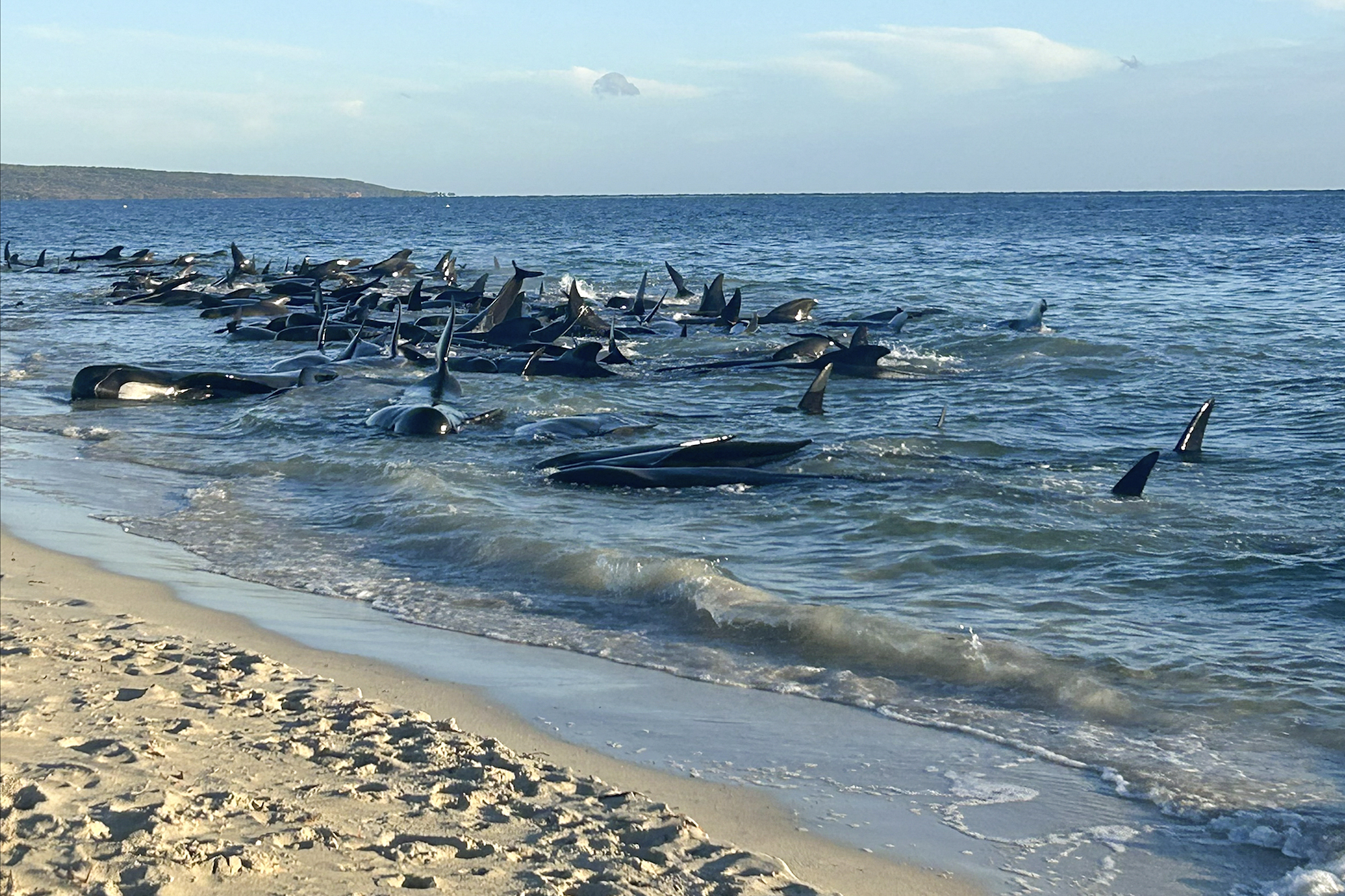Before all the shouting and the sweeping and the rolling of rocks at the Olympic curling venue can begin, that's when Shawn Olesen gets to work.
An assistant ice technician for the U.S. Curling Association, Olesen is in South Korea to help with the painstaking process of getting the sheets at the Gangneung Curling Center ready for competition. One of his jobs at the Pyeongchang Olympics is scraping off the old layer of pebbles — the tiny dots of ice that cause the stones to curl — so a fresh layer can be applied to the sliding surface.
And his goal, like the referees in a basketball game or the guy mowing the grass at the Masters: making sure no one is talking about him or his co-workers when the tournament is over.
"Nobody knows the greenskeeper at Augusta," Olesen said. "But they love playing there."
Curling is the busiest sport at the Olympics, with 18 straight days of competition and as many as three sessions with four concurrent matches per day. And between each game, the ice needs to be repaired and prepared with a new layer of pebbles, which reduce the friction on the 42-pound curling stones as they slide down the ice on the bending route that gives the sport its name.
The pebbles allow the athletes to swing their stones around an opponent's and into the scoring area called the house. If they're not big or small enough, the rocks' speed won't be right; if they're not evenly spread, players won't be able to plan their shots using the strategy that makes curling more like chess on ice than just a frosty form of shuffleboard.
Like a golfer reading a green, curlers pick up tendencies in the ice and the stones. Some sheets curl more than others, or curl differently at each end; sheets also can change as the tournament goes on, said Canadian Glenn Howard, a two-time world champion who is coaching the British women in Pyeongchang.
U.S. & World
"There's always going to be little nuances to the ice," he said. "That's the beauty of ice-reading is that the team that picks up little nuances as the week goes on gets a little bit (of an edge) over the team that doesn't."
The World Curling Federation has entrusted the care of its ice since the Vancouver Games to Hans Wuthrich — "basically the go-to guy on the planet" for curling, Olesen said. In Pyeongchang, he oversees a staff that is busiest when the TV cameras are off and the players are resting.
"There's a lot that factors into it that I don't even know," Canadian vice-skip Emma Miskew said after a recent match. "I just know Hans is a great icemaker and he's doing a great job out there."
Although the sport started six centuries ago with Scotsmen spinning stones around on frozen ponds, preparation of the Olympic curling sheets has developed into an exacting science.
As soon as a recent round of competition was done, Olesen wheeled over a pair of scrapers — think farm equipment, like a tiller, except with a 5-foot, super-sharp blade in the front. Off came the old layer of pebbles; three men wielding three different kinds of brooms helped sweep off the shavings.
What followed was a ballet every bit as graceful as the most intricate ice dancing twizzle or the Double McTwist 1260 on the halfpipe.
Wearing a 15-liter jug on his back, Deputy Chief Ice Technician Mark Callan moonwalked down the center of the sheet while waving a petal-shaped copper sprayer back and forth, sprinkling droplets across the surface. He waits for it to dry and then does it again.
There are "a few thousand" gallons of water in the ice of a curling sheet, but it's the last gallon that makes all the difference, Olesen said. (The water has its own story: It comes in from a faucet but then goes through a multitank reverse osmosis and de-ionization process that is housed in a chemistry lab-style room under the venue stands. And then it's heated to the proper temperature — 140 degrees for the bigger, first layer of pebbles, 80 degrees for the second layer — in a metal urn identical to the ones used for coffee and tea in the media cafeteria.)
After the pebbling, another scraper nips off the very tops of the dots of ice to allow for a smoother glide. The perfectly prepared curling sheet will take about 25 seconds for a draw to the button — a shot that lands in the middle of the target — and about five feet of curl.
Wuthrich tests it himself.
Olesen, 48, has been making curling ice for about 15 years, many of them at the Fargo-Moorhead Curling Center in North Dakota, where he also works as a senior warehouse operator for a Land O'Lakes unit. He worked the ice at the world championships in Grand Forks in 2008 and long thought about applying for the Olympics. (The company gave him the time off so he could go to Pyeongchang.)
"I felt like it was time to try if I was ever going to do it," he said.
In a way, going to the Olympics is the same for an icemaker as it is for the athletes: an honor to be selected, and a thrill to participate, Olesen said.
And, like the athletes, he won't celebrate until it's over and he has done his job well. As the curling competition headed toward the medal round, there had been few complaints about the ice.
"We try to stay under the radar," Olesen said. "If they're asking about us, something went wrong."
___
More AP Olympic coverage: https://wintergames.ap.org
___
This story has been corrected to show that the technician's last name is Olesen, not Oleson.



